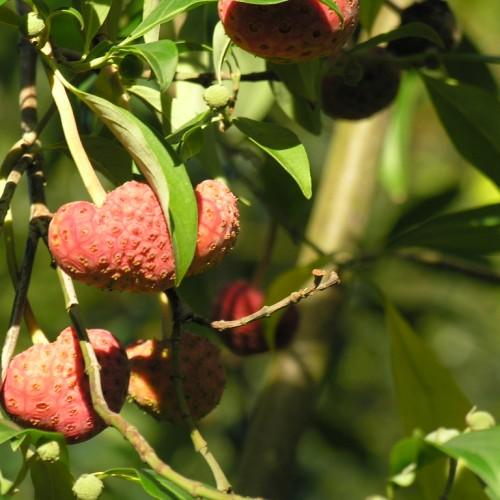
evergreen dogwood
Cornus capitata
Cycle:
Perennial
Watering:
Average
Hardiness Zone:
8 - 9
Flowers:
Flowers
Sun:
Full sun,part shade
Leaf:
Yes
Growth Rate:
Low
Maintenance:
Low
Salt Tolerant:
Yes
Care Level:
Medium
watering
Watering an evergreen dogwood (Cornus capitata) is relatively straightforward and easy. Generally, it should be watered weekly, and should receive about 1-2 inches of water per week (similar to other plants in its category like azaleas, rhododendrons, and so on). The watering should be steady and deep, allowing the water to penetrate the soil around the root of the plant and reach a depth of about 6-8 inches. However, if you are in a region that is especially hot and humid, then you may want to water evergreen dogwood more frequently - about 2-3 times a week if necessary. Make sure the soil does not become overly saturated though! This can cause root rot, and can be fatal to the plant.
sunlight
Evergreen dogwood (Cornus capitata) is a species of flowering shrub that thrives best in bright, indirect sunlight. It prefers to receive at least 4 to 6 hours of sun each day, preferably in the early morning or late afternoon. This species prefers partial shade during the peak noon hours, when the sun is at its brightest and strongest. This plant does not tolerate full sun during the peak hours, and should be provided with some shade to protect it from the most powerful rays of the sun. Although evergreen dogwood is a hardy species, it will not do well in intense full sun for long periods of time and may suffer from leaf scorch.
pruning
Pruning your evergreen dogwood (Cornus capitata) should be done at least once a year, preferably in early spring before any new growth appears. Pruning during winter dormancy can also be beneficial to determine the size and shape of your dogwood. If the plant was neglected for a few years, vigorous pruning can help control its size and shape. Prune the branches back to an outward facing bud – this will encourage growth and fuller foliage. When pruning, it is important to use sharp, clean, pruning shears, taking care to cut just enough to keep the plant in a desired shape and size. Pruning more than about a third of the total branches should be avoided.
